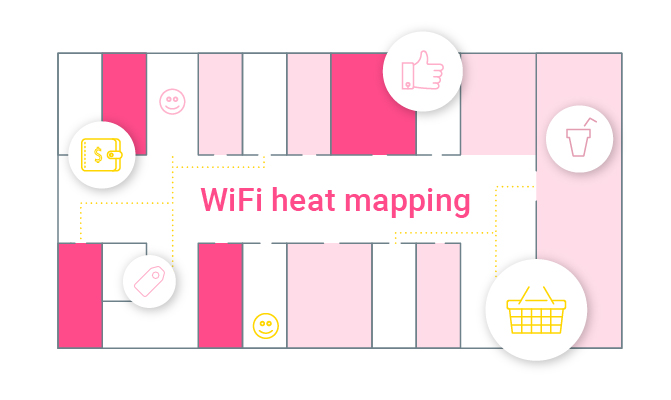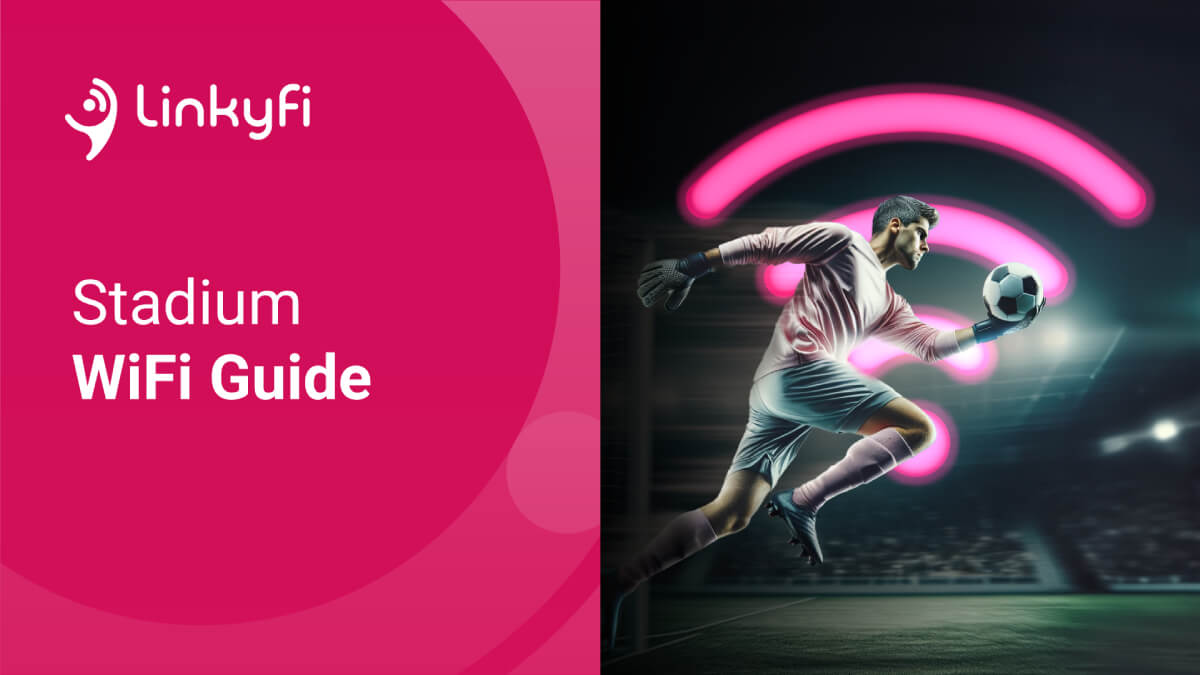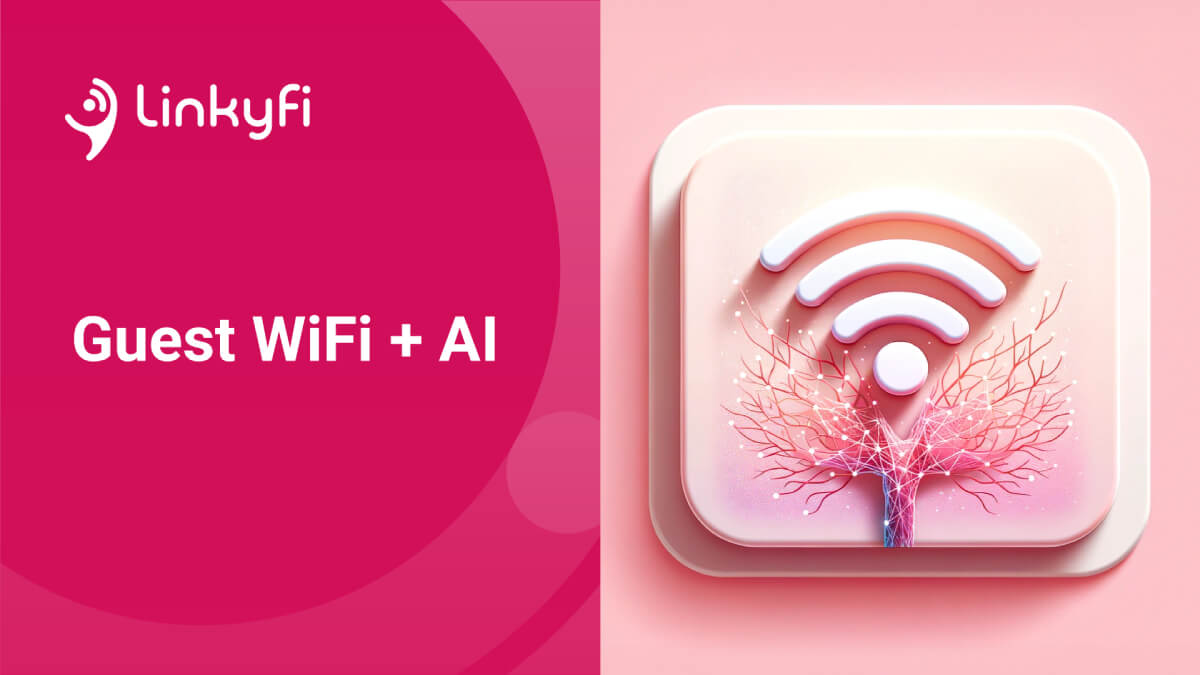Why is WiFi heat mapping such a hot topic?

The time when businesses could only focus on what purchases customers make is long gone. Now, to grow, businesses also need to monitor how customers shop and adjust accordingly. One of the ways in which they can do that is by analyzing customer traffic heat maps. These clearly visualize aggregated data about traffic, so that venues can better understand their visitors and make necessary improvements to drive revenue. Read on to learn how you can use heat mapping to your advantage, whether you own a store, are considering WiFi for shopping malls, or a stadium WiFi solution.
What is a WiFi heat map?
In most general terms, a heat map is a visual representation of traffic data overlaid onto a map. It probably takes its name after thermal cameras which present a similar visual – red signifies a lot of heat (or traffic), green represents a norm, and blue shows cold areas (or areas with little to no traffic). In other words: a heat map shows which places get the most attention.
Heat maps are often used in digital marketing and e-commerce to see what people look at and where they click on a website, and leverage that for profit. Not everyone knows, though, that with WiFi, heat mapping can also be done in brick-and-mortar locations to no less advantage.

How does it work?
There are actually several ways in which physical venues can obtain data needed to generate heat maps. There is, for example, software that lets them convert the visual from CCTV into traffic data. However, monitoring doesn’t usually cover the whole venue, which means not all areas can be mapped. Alternatively, venues can also rely on Bluetooth Low Energy (BLE). Then, a BLE beacon collects information from Bluetooth-equipped devices. While this provides fairly precise measurements, it also requires the venue owners to provide visitors with BLE tags, which makes it more suitable for places like offices, where the visitors are mostly the same every day.
This is why many turn to WiFi heat mapping as a hassle-free way of getting the data they need. In this scenario, a WiFi access point collects “pings” from the devices that probe for network access. The user doesn’t have to actively try to connect to the network, they just need to have the WiFi on. As most public venues nowadays already offer hotspots and most people carry WiFi-enabled devices (such as smartphones or tablets) on them, this is as good a solution as it gets. With the right software for WiFi-based location services, venue owners can turn their existing hotspots into data mines at little cost. When aggregated, the combined WiFi presence analytics, such as information on how the visitors move and how long they stay in a given place is visualized in the form of an easy-to-understand heatmap.

Why should you look at your WiFi heat maps?
Create better layouts
WiFi heat maps show you where customers like to stop in your store and which areas they ignore entirely. Based on that, you can introduce changes to the store layout and display key products in areas that get the most traffic. And if you’re not sure whether it’s the layout that generates traffic or the actual products? You can run A/B tests to see which setup performs better.
Design customer journey
Similarly, if you have data on customer traffic from heat maps, you can easily modify the layout to design a better customer journey. When you know what products the customers look for and where they spend the most time, you can arrange the display in a way that is most convenient. This will make the customers happy to come back and improve their opinion of your brand.
Plan better promotions
Knowing how people move around the venue and where they linger can also help you improve on your promotional activities. This can affect where you place your promotional stands or where you display digital signage. But you can also use it to plan advertising events, such as tastings, samplings, celebrity performances, etc. After all, it’s only money well spent if people see it and it brings measurable profits.
Optimize resources
WiFi heat mapping also allows you to use your resources better, whatever the venue that you manage. It can, for example, show you which areas are under-visited and therefore probably don’t require as much attention (be it from the cleaning services or replenishment teams in stores). It can also show you the distribution of visitors around the venue, so you can plan where you need more staff to attend to their needs.

Use data for profit
Not only do customer traffic heat maps show you the opportunities for saving, they also show you the opportunities for profit. As we’ve already established, they visualize which places are the most popular, i.e. get the most footfall. You can leverage that information to negotiate with your tenants. It’s a smart business decision for the tenants to have their store in the place that gets the most traffic, and it’s equally smart for you to charge more for that location.
Avoid congestion
Unobstructed flow has always been important for large venues, be it shopping malls or stadiums. After all, nobody likes pushing through a crowd and nobody likes to wait in lines. These days, however, keeping the distance is more important than ever and social distancing and occupancy management have quickly become one of the main concerns for all public spaces. Thankfully, with WiFi heat mapping it’s much easier for venues to identify bottlenecks and remedy them to ensure both visitor safety and satisfaction.
Wait, there’s more...
There are many reasons to observe customer traffic heat maps and many ways to do it. It will help you optimize your venue for better performance, profit, and customer satisfaction. However, the mere access to heat maps may not justify the initial investment. This is why WiFi heat mapping is a reasonable choice for many venues, especially if they already have the necessary infrastructure, i.e. WiFi for restaurants, WiFi for banks, etc. But your efforts shouldn’t end there and heat maps shouldn’t be the ultimate goal. Good retail WiFi software and solutions for other businesses that offer heat mapping should also come with advantages such as indoor location tracking and a WiFi marketing platform. This way you will be able not just to see your traffic, but also take action on your findings to increase your profit even more.
Recommended posts
- WiFi for Stadiums Explained
- Guest WiFi - Easter Marketing with AI: A Step-by-Step Guide
- Guest WiFi + AI: Your Marketing Dream Team!
Subscribe to stay in the loop with all our latest content:
Recommended posts



